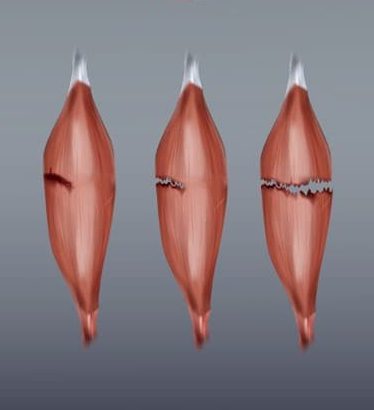Muscle tear - Muscle rupture
Almost everyone who plays sports experiences it: you are in full motion and suddenly "pats"! As if something hits your leg or calf. It can be quite painful, but you immediately feel that you can't apply much force anymore and you have to stop exercising. After a while, swelling and blue discoloration may occur; this can sometimes last up to a day.
The most common muscle tears occur in the legs because this is where most explosive forces are applied during sports. Examples include calf rupture (whiplash), hamstring rupture or quadriceps rupture (upper leg muscle).
Gradations of muscle tear
Features
We know three degrees within muscle tears.
The first one is not really a tear but more like a stretching, this one is also the quickest to pass.
The second one is a partial or partial tear, this one we see most frequently in practice.
The third is a complete tear, which cannot always repair itself and will have to be assessed by an orthopedic surgeon or a sports doctor and may require surgery.
Research and treatment
Anamnesis and a physical examination is sufficient in most cases to diagnose muscle tear.
To confirm the diagnosis of muscle tear, we can perform an ultrasound within Fysiotherapie de Jong to assess the muscle inside. This allows us to say more about the severity of the damage.
Treatment will include providing loading advice, correcting any movement limitations in the chain of motion, and bringing the damaged muscle to length and strength.
In addition, the overall movement pattern and coordination will be examined, these will be optimized to reduce the risk of injury in the future.
Of course your physical capacity and the level you want to return to in sport will be taken into account.
Cost
Physical therapy is covered by your supplementary insurance. Don't have supplementary insurance? Then we apply the following rates.
GP/specialist referral
Would you like to make an appointment regarding the above complaint? For this you do not need a referral from your GP or specialist. You can contact us directly.
For recovery after surgery, a referral from the specialist is required.

